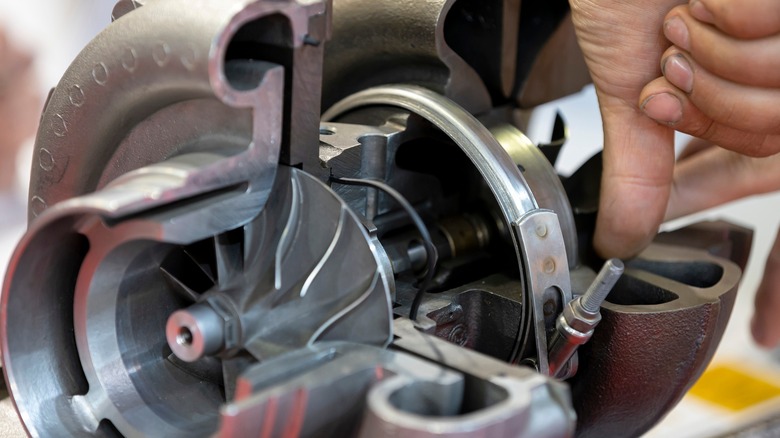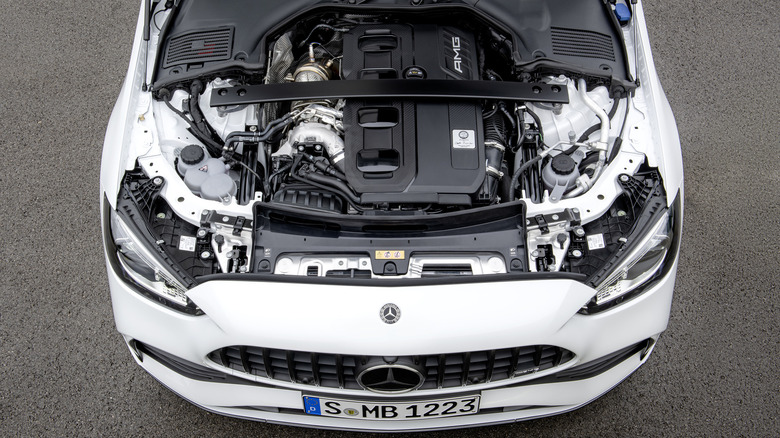Power Surge: How Turbocharging Transforms Engine Performance
Turbocharged engines may seem like a modern invention, but the progenitors of internal combustion engines have been finding ways to boost the power output of their fossil fuel-burning creations. Rudolf Diesel, the father of the diesel engine, created the world's first supercharger in 1896. However, it wasn't until the early 1900s that Swiss engineer Dr. Alfred Buchi designed a supercharger motivated by exhaust gasses, essentially giving birth to the modern turbocharger.
Dr. Buchi successfully built the first turbocharged diesel engine prototype in 1915, and General Electric began testing turbocharged engines in 1918. The first commercially produced turbocharged car was the 1962 Oldsmobile Jetfire V8, fitted with a Garret-AiResearch T5 turbocharger, but the technology wasn't ready for primetime use and abuse.
Early turbocharged engines were unreliable, difficult to service, and delivered tepid performance. The engineering was there, but the technology and materials held back the rapid advancement of commercial turbocharged cars. However, with the introduction of the Mercedes-Benz 300TD in 1979 (the first passenger car with a turbodiesel engine), the world finally saw the genuine potential of turbochargers.
How does a turbocharger work?
The internal combustion engine is essentially a giant air pump. A typical gasoline-powered engine has a stoichiometric (meaning relationship between materials and reactants) air-fuel ratio of 14.7:1 — meaning it needs 14.7 grams of air for every gram of fuel burned.
The stoichiometric ratio is the ideal proportion of fuel and air to burn all the fuel without excess air. Engineers can add power to an engine by upsizing the pistons and giving it more combustion chambers, enabling the motor to ingest more fuel and air.
However, the 1970s oil crisis saw a downsizing trend towards oil use and fuel consumption, paving the way for smaller engines with turbochargers. Any turbocharger is an air pump that takes air at ambient pressure, compresses it to about 19 psi (or 30% above atmospheric pressure), and feeds it to the engine, hence why turbochargers are also called "compressors." The turbocharger has an exhaust side that gathers hot gasses to spin the vanes on the inlet side, which means the turbo spins faster as the revs go higher.
The compressed air mixes with the atomized fuel, enabling the fuel to burn more efficiently and giving the engine a modest power hike. By feeding the engine more compressed oxygen, turbochargers are generally 30% to 40% more potent than naturally aspirated gas engines.
What is turbo lag?
Turbo lag is a common phenomenon among turbo engines, and it's the throttle delay experienced by drivers when accelerating as the turbo spools up to feed the engine more air. It has something to do with the boost threshold RPM of the engine, the speed at which an engine spins so the turbo can begin delivering the boost.
Turbochargers typically provide a boost from 3,000-4,000 rpm, but modern technology and software are changing the game. The 2023 Mercedes-AMG C 43 is the first production car with an electronically-controlled turbocharger, consisting of a miniature electric motor inside the blower that can spin the turbo shaft directly, while the mechanical side awaits the boost.
The result is 402 horsepower and 369 pound-feet of torque, thanks to the "Voodoo" turbo and a 48-volt mild-hybrid system that adds 13 more horsepower on demand. Other manufacturers are using twin-scroll turbocharging, variable-geometry turbocharging, twin charging (supercharger and a turbocharger), and other technologies to eliminate turbo lag and make turbocharged engines more reliable, more powerful, and more efficient.

